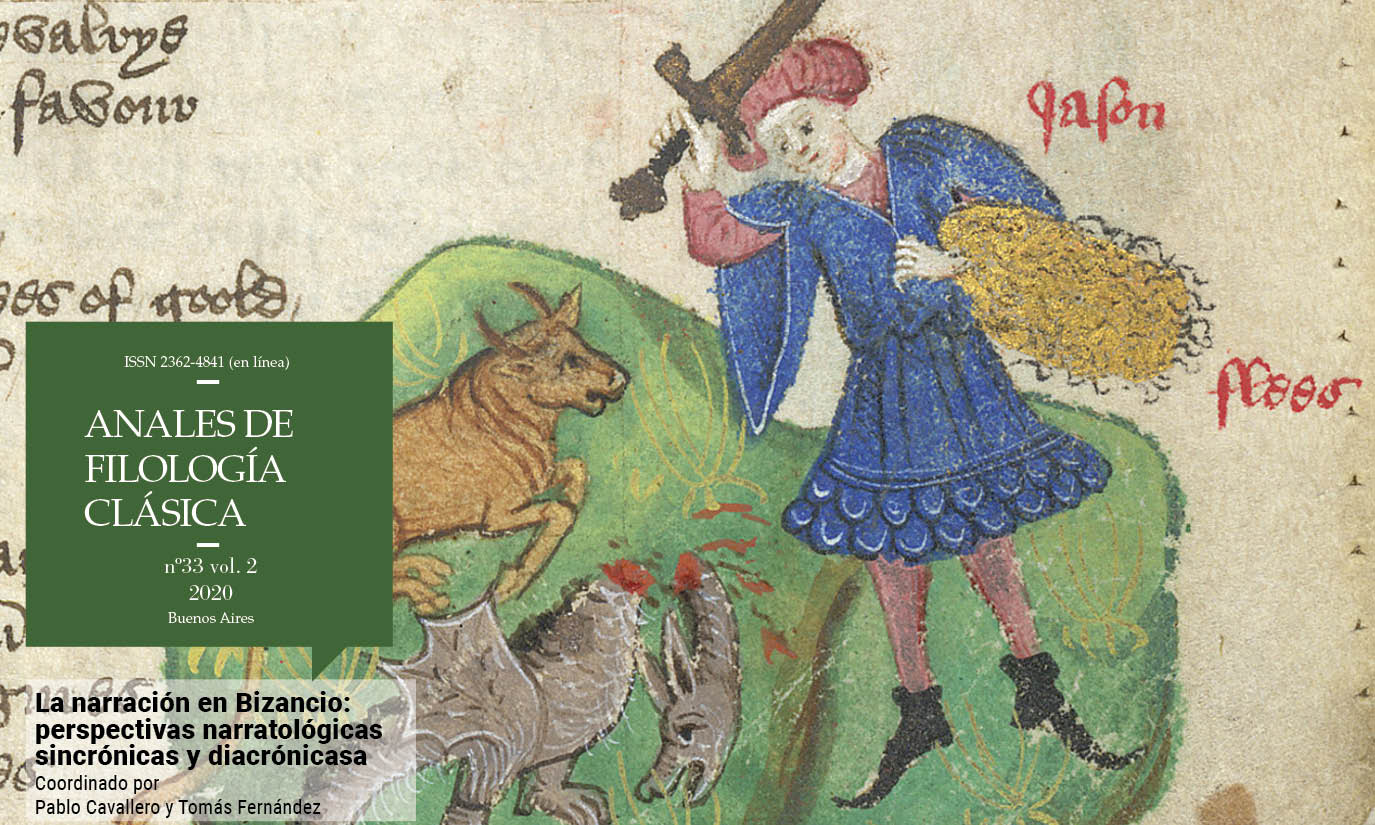Narrate and describe: ékphrasis, story and image in the cento Christus Patiens
Keywords:
ekphrasis, description, narratology, cento literature, iconography
Abstract
The era of the Comneno emperors (1081-1204) was characterized by a predominance of narrative prose, embodied in the novel, in hagiographic stories and in historical chronicles. During the aforementioned period, thanks to the influence of 11th-century intellectuals such as Mauropous or Psellos in the Constantinopolitan court, there is a revival of artistic and literary activity, especially related to the classical tradition. Today, several specialists from Byzantine studies place the writing of the Christus Patiens cento in this period. Although attached to the dramatic genre, the text admits the application of theoretical guidelines around narration and description. The objective of this paper will be to focus on the narratological and iconographic analysis in the double scene of the wound on the side, located at the time of Christ’s death and at the beginning of the burial scene. The reading hypothesis states that the repetition of the reason for the injury indicates, in our opinion, the desire to highlight a paradoxical conjunction between the somatic and the dogmatic, sustained in turn by an intertextual network from the Euripidean tragedy. To this end, among other objectives, we will highlight some resources –such as focalization– that alternate between narration and ekphrasis. In the conclusions of our analysis we maintain that these procedures are revealed as producers of image of great relevance within the poetics of the cento.Downloads
Download data is not yet available.
Published
2020-11-30
How to Cite
Rivas, E. G. (2020). Narrate and describe: ékphrasis, story and image in the cento Christus Patiens. Anales De Filología Clásica, 2(33), 111-124. https://doi.org/10.34096/afc.i33.10019
Issue
Section
Artículos
Los autores/as que publiquen en esta revista aceptan las siguientes condiciones:
- Los autores/as conservan los derechos de autor y ceden a la revista el derecho de la primera publicación, con el trabajo registrado con la licencia de Atribución-CompartirIgual 4.0 Internacional (CC-BY-SA 4.0) de Creative Commons, que permite el uso comercial de la obra y de las posibles obras derivadas, la distribución de las cuales se debe hacer con una licencia igual a la que regula la obra original.
- Los autores/as pueden realizar otros acuerdos contractuales independientes y adicionales para la distribución no exclusiva de la versión del artículo publicado en esta revista (p. ej., incluirlo en un repositorio institucional o publicarlo en un libro) siempre que indiquen claramente que el trabajo se publicó por primera vez en esta revista.
- Se permite y recomienda a los autores/as a publicar su trabajo en Internet (por ejemplo en páginas institucionales o personales) antes y durante el proceso de revisión y publicación, ya que puede conducir a intercambios productivos y a una mayor y más rápida difusión del trabajo publicado (vea The Effect of Open Access).
En ningún momento se cobrará monto alguno al autor por la publicación en esta revista.







